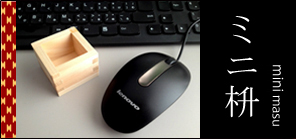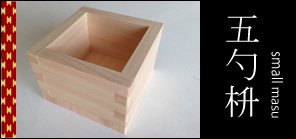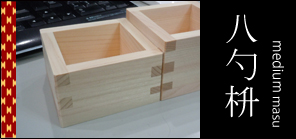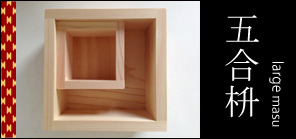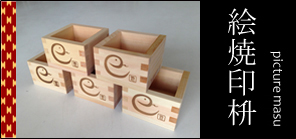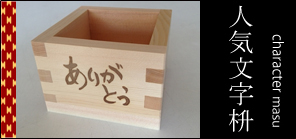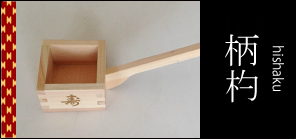


There are 15 official Japanese public holidays in a year, which makes Japan the 3rd country with the most public holidays in the world. Japan has this ranking in tie with the following countries: Cyprus, Slovakia, South Korea and the Philippines. The 2nd position is earned by the following countries: Malaysia, India, Lebanon and Thailand. Finally the 1st place is owned solely by The Land of El Dorado, Columbia. On this page, we have tried to collect the most important Japanese holidays and give a short description on all of them, please note that not all of these days are official national holidays in Japan. If you would like to see which are official Japanese holidays and which not then please check the table on our page about Japanese celebrations.
Now here is the short description of the most important traditional Japanese holidays:
- Japanese New Year (Shougatsu) - 1st of January
This national holiday is considered to be one of the most important holidays in Japan. Many shops and businesses stay closed from the 1st up to the 3rd or 4th of January. In Japan most families get together to spend this holiday similarly to Christmas in Western countries. This is the time of the year when you can buy taru sake in almost every bigger super market and taru sake is best enjoyed from authentic wooden sake cups called masu.
- Coming of Age (Seijin no hi) - 2nd Monday of January
This Japanese holiday is held also in January as a gesture of congratulation for all those young Japanese people who have turned 20 in the previous year. This event encourages these young people to lead a happy, successful life, since they have reached the age of majority, they have become adults. The celebration consists of a formal ceremony at the regional prefectural offices and rather informal after-parties afterwards, where all these young adults can officially drink alcohol first time in their lives. Why not do it a from masu cups branded with a nice logo commemorating this unforgettable event?!
- The last day of winter (Setsubun) - 3rd of February
Just as it's name says, Setsubun is held on the day that is considered to be the last day of winter every year. This celebration is the Japanese way to say goodbye to winter and to welcome spring. The most important thing that has to be accomplished on this national holiday is to chase away evil from our home and to welcome luck and prosperity. It's done by throwing beans from a masu cups at a family member dressed in a demon outfit and chase him/her out of the house symbolically, then finally slam the door. This is the reason why Setsubun is also called Japanese bean throwing festival in English. Please read more on the following page: Setsubun(Bean-Throwing Festival) and masu
- National Foundation Day (Kenkoku kinenbi) - 11th of February
According to the traditional lunisolar calendar based on the Chinese system, the 1st of February was actually the first day of the first month. Based on the Nihon Shoki(The Chronicles of Japan), Emperor Jimmu has taken the throne of Japan on this day in 660BC and the country of Japan was founded upon this act. Emperor Jimmu became the first Emperor of Japan. National flags are raised throughout Japan on this national holiday to commemorate this event and people take some time to reflect on what Japanese citizenship means to them.
- Valentine's Day - 14th of February
Valentine's day in Japan is all about chocolate chocolate. It's the day when Japanese women give gift chocolate to men around them: family members, relatives, friends, co-workers and of course lovers. Originally this holiday was artificially introduced to Japan by Morozoff Ltd. in 1936 to increase chocolate sales, but it is claimed that the first year that it brought a real success for the confectionery industry was 1958. The original marketing plan was to make Japanese men buy chocolates for their lovers, but since men were reluctant to do so, the industry has shifted the campaign to women. Nowadays Valentine's day is said to generate about 53% of the annual income of the Japanese chocolate industry.
- Doll's Festival (Hinamatsuri) - 3rd of March
Hinamatsuri is called Doll's Festival or Girl's Festival, because on this Japanese holiday people set up platforms covered with a long red carpet on which hina ningyou (dolls) are placed representing different figures. The custom of diplaying dolls this way originates from the Heian period(794-1185). The Emperor and the Empress are the main figures, they are always on the top of the display. Other figures could be sake bearers, court attendants, musicians, ministers, helpers and samurai (body guards). Beside the figures items are displayed as well. Displays start as soon as February and are taken down as soon as the day of Hinamatsuri is over. Foodstuff that are customarily popular at this time of the year are: shirozake, hina arare(small, colorful, sweet crackers), hishimochi(3 colored rice cake), chirashizushi(lit. scattered sushi) and ushiojiru(salt based clam soup).
- White Day - 14th of March
White day in Japan is the holiday when men are supposed to return the favour of Valentine's day to women. It was the next big step of confectionery industry to generate even more profits. In 1977 a Fukuoka-based confectionery maker attempted to introduce "Marshmallow Day" as a payback day for Valentine's Day, but the attempt failed. However, the other confectionery companies have immediately picked up the idea and have began marketing white chocolate to first celebrate White Day in 1978. Nowadays White Day has gone far from chocolate, since the most popular gifts on this day are: a necklace, a ring, a handkerchief, a bouquet of flowers and stuffed animals.
- Spring Equinox Day (Shunbun no hi) - 20th of March
Established as a Japanese national holiday in 1948 to celebrate the changing of seasons and the spring equinox when the hours of light and darkness are equal. This is also the day when Japanese people pray for a good harvest. Originally this holiday was called Shunki koureisai a celebration which started in 1878(11th year of Meiji) to pay respect to former emperors and imperial family members. Nowadays it's also a day for visiting graves of one's ancestors.
- Showa Day (Shouwa no hi) - 29th of April
In the Showa era, this holiday has been the celebration of the Emperor Hirohito's birthday. After his death in 1988, it has been decided to keep this day a national holiday as Greenery day. Finally, this Japanese holiday has gained its current name in 2007 when it was successfully renamed Showa day, in order to remember the 63 turbulent years of Emperor Hirohito's reign as well as the rise of Japan as a economic and industrial power. This day marks the start of the Golden Week in Japan.
- Constitution Memorial Day (Kenpou kinenbi) - 3rd of May
The Japanese holiday when people celebrate the promulgation of the so-called "Peace Constitution" or "Postwar Constitution" on this day. One of the most important part of this constitution is the part that renounces the right from Japanese people to wage war ever again, contained in Article 9. Furthermore it also considered to be a day for reflecting on what democracy means and on the Japanese government. It's also the part of the famous Japanese Golden Week.
- Greenery Day (Midori no hi) - 4th of May
Emperor Hirohito had a love for nature and plants, which may be the reason why his birthday has been celebrated as Greenery Day after his death. In 2007 Greenery Day was moved from the 29th of April to the 4th of May, since the 29th of April became Showa Day. It's usual to plant trees and to do various other activities connected to nature. There are many events featuring floating decorations, traditional costumes and in some cases even fireworks. Greenery Day is the best day for hiking, playing in a park and enjoying the mild, sometimes even a little hot spring weather of Japan!
- Children's Day (Kodomo no hi) - 5th of May
This Japanese holiday was originally called Tango no Sekku(Dragon boat festival) celebrated according to the Chinese lunar calendar on the 5th day of the 5th moon. Later it has been fixed on the 5th of May after Japan has started to use the Gregorian calendar. Finally it became a national holiday in 1948. Respect for children's personalities and gratitude for mothers are in focus on this day. Originally it was designated as Boy's Day which is the reason why decorations displayed at one's home in this time of the year are: a Kintarou doll (usually riding a large carp), a kabuto(traditional Japanese military helmet) which are both symbols of a healthy and strong boy. Koinobori banners are also displayed well before Children's Day in Japan to celebrate the growing up of children. Carp banners originate from a Chinese legend that say that the carp that swims upstream will become a dragon. Nowadays this holiday is not restricted to boys only, it has become a celebration for all the children!
- Star Festival (Tanabata) - 7th of July
Tanabata literally means "The seventh evening" in Japanese and it originates from Chinese mythology. In China it is called the Qixi Festival. In Japan, people celebrate the annual meeting of Orihime(the Vega star) and Hikoboshi(the Altair star) on this holiday, since due to the legend they are separated by a river(the Milky Way) and they can meet only once a year on the 7th day of the 7th lunar month. However, even though they meet on the opposing sides of the river, there was no bridge to cross the river. Orihime cried so much for this reason that a flock of compassionate magpies made a bridge with their wings so that the lovers can cross the river and meet each other. It is believed that if it rains on the day of Tanabata, then the magpies cannot come and the lovers must wait a year till they can attempt to meet again. However, ironically the probability of rain is about 74% on this day (Tokyo) in average, which is quite high. On the other hand, the probability of rain on the 7th day of the 7th lunar month is only 47%, meaning that both good and bad weather conditions are almost equally possible.
- Ocean Day (Umi no hi) - 3rd Monday of July
Also known as "Marine Day" or "Ocean Day" and it's obsereved as a Japanese holiday for saying "Thank you" for all the treasures received form the seas and oceans. Since Japan is an island country, it's important to contemplate on the importance of all the surrounding waters that both protect and nurture the people of this country. Many Japanese people spend this whole day on the nearest beach doing all kinds of fun games like suikawari(watermelon breaking), hanabi(fireworks), takoage(kite flying), playing beach volleyball and building sand castles. It became a Japanese national holiday in 1995 observed first in 1996.
- Obon - 13-15th of August
The Japanese Buddhist holiday for honoring the spirits of one's ancestors. Originally it was celebrated on the 15th day of the 7th lunar month, but recently in most regions it is either celebrated around the 15th of July (in the Kanto region) or around the 15th of August, so there's 3 types of Bon holidays: Shichigatsu Bon(in July), Hachigatsu Bon(in August) and Kyuu Bon which is base on the lunar calendar. Families usually get together for Obon, usually in the home of the grandparents and since it is believed that deceased family members return home to be reunited with the family, many people light smaller bonfires outside their homes as guiding lights for these spirits. Obon is also called "Lantern Festival" due to the custom to send lit lanterns down the nearest river at night to "see off" the spirits of the ancestors afterwards. Bon Matsuri(Bon Festivals) are organized throughout the country in this time of the year, where in the evening Bon Odori(Bon dance) is performed in a circle around the yagura(a wooden scaffold). The purpose of the dance is to invoke the spirits of the ancestors. The dancers usually wear either kimono or yukata of the same style. Music has an important role in the Bon Odori and it is not restricted to the original Obon music and minyo(traditional Japanese folk music). Popular enka songs and children's songs are also played during the dancing. This is one of the most enjoyable Japanese holidays in the whole year!
- Respect for the Aged Day (Keiro no hi) - 3rd Monday of September
Started to be celebrated as Old Folk's Day in Nomadani village of Hyougo Prefecture in 1947. It was so popular that it has quickly spread nationwide and was officially established as a holiday in 1966 to pay respect to the elderly and to celebrate the long life. Although it was originally held on the 15th of September, it was moved to the 3rd Monday of September in 2003. On this day Japanese people give gifts to old relatives as a sign of respect for their old age. Events (like mass exercise programs) and festivals for the elderly are held throughout the nation.
- Autumn Equinox Day (Shuubun no hi) - Around the 23rd of September
Usually it is held on either the 22nd or the 23rd of September and is considered to be a Japanese public holiday. Originally, just like its spring counterpart this celebration was called Shuuki koureisai a celebration which started in 1878(11th year of Meiji) to pay respect to former emperors and imperial family members and in 1948, it was renamed Autumn Equinox Day to make it be a non-religious holiday. Since harvests, especially inakari(rice harvests) are held around this day, and people express their gratitude for the rich harvest on this day. It's also the blooming season of the beautiful higanbana (red spider lily) which marks the arrival of fall. Higanbana is often planted on graves to show a tribute to the deceased, and since it is associated with death, people believe that nobody should give a bouquet of these flowers. Nowadays shuubun no hi is also a day for visiting graves of one's ancestors, just like its spring counterpart.
- Sports and Health Day (Taiiku no hi) - 2nd Monday of October
Held on the second Monday in October, it commemorates the opening of the Tokyo Summer Olympic Games in 1964. As such a holiday, the Sports Day of Japan also promotes the various sports and a healthy, active lifestyle. Choosing this rather late time of the year due to the efforts on avoiding both the summer heat and the rainy, typhoon season. Most schools and even many businesses use this day for holding their annual undoukai (field day). Popular activities on this day include: tug of war, kibasen (mock cavalry battle), 100m sprint, 4 x 100m relay running, obstacle course, ball toss, long jump, sack jump race and so on. In elementary schools, usually the family members of the children also participate in the events, but some people prefer to be only a spectator. Winners of the races even get prizes of various useful items around the household.
- Culture Day (Bunka no hi) - 3rd of November
Promoting Japanese culture and culture as a whole, as well as arts and academic efforts, Culture Day in Japan incorporates various kind of events: martial art performances, music and art performances, art exhibitions, parades, awarding etc. As a commemoration of the announcement of the Japanese post-war constitution in 1946, it was held first on the 3rd of November in 1948. Originally this day has been celebrated as Tenchousetsu, the birthday of the Meiji emperor from 1868 till 1912 and it was reintroduced as Meijisetsu in 1927 until 1948 although the original purpose of this holiday was not directly related to culture.
- Seven-Five-Three (Shichi gou san) - 15th of November
This day is the traditional Japanese Children's Day that originates from the Heian period where among court nobles, it became customary to celebrate the growth and health of small children. This holiday is focused on on 3 and 5 year old boys and for 3 and 7 year old girls, because in East Asia, odd numbers were always considered to be lucky. Over the time, this tradition was passed on to samurai families and finally onto commoners as well. The samurai class has added a number of rituals to this tradition, like at the age of 3 children could grow out their hair freely, were not required to be shaven any more. Boys at the age of 5 could wear a hakama for the first time wheras girls were allowed to use a real obi for tying their kimonos. This is the reason why nowadays many Japanese families dress their children in traditional clothes, visit a shire to pray for the long and healthy life of their children and take cute photos of of them. The children are given a chitoseame(thousand year candy) that is a long, thin, red and white colored candy, which symbolizes longevity and probably also the time needed to eat the whole candy.
- Labor Thanksgiving Day (Kinrou kansha no hi) - 23th of November
Originally it was a harvest festival named Niinamesai, when the Emperor offered the newly harvested crops to the deities as an offering for the good harvest as well as the first tasting of the new rice. The tradition of formalized thanksgiving celebrations go back to the reign of Emperor Seinei(480-484AD). The nowadays Labor Thanksgiving Day is held for commemorating the year's hard work in the production of goods and for expressing gratitude towards workers.
- Emperor's Birthday(Tennou no tanjoubi) - 23th of December
National holiday in celebration of the birthday of the currently reigning Emperor of Japan, Emperor Akihito on the 23rd of December in 1933. The Imperial Palace is opened to the public on this day, where the Emperor can receive the congratulations from the balcony of the palace. The people attending this occasion are usually weaving small Japanese flags in their hands.
- Christmas - 24-25th of December
Despite the fact that it's not a recognized national holiday in Japan, we have included Christmas in this list due to its growing popularity in Japan. Many things have already been adopted from the Christmas traditions and are gaining popularity: decorations, illumination, gift-giving, Santa outfits and Christmas trees. In Japan, instead of being a family event, Christmas is usually for lovers and couples. It's rather romantic day for Japanese people and it's also very common that friends gather to hold an at home Christmas party.
- New Year's Eve (Oumisoka) - 31st of December
Contrary to the western New Year's Eve parties, Oumisoka is a family event in Japan, when many family members get together to celebrate the last day of the year. After New Year's Day, it's the second most important holiday of the year. There are many traditions in connection with Omisoka, so let us mention some of them: toshikoshi soba or udon (two different types of noodles) are eaten from around 11pm in order to say goodbye to the old year and welcome the new year. Though it's becoming less popular, Osechi(boxed food made with natural preservatives) is usually made in advance to eliminate cooking on the first 3 days of the new year since it is considered unlucky. Nowadays people tend to rather buy Osechi instead of going through the troubles of making it. Right after midnight the temples and shrines are stuffed with people going for a Hatsumode(the first visit of the year) and Shinto shrines prepare amazake(hot drink made of fermented rice, the by-product of sake making) and various charms for the people whereas Buddhist temples struck their bonshou(cast bell) 108 time to eliminate each and all of the earthly desires that are the cause of human suffering.
Hatsumode at a Japanese shrine looks like this:
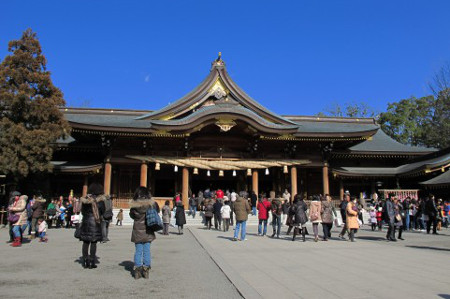


All the above prices are unit prices available above a given order quantity (1,30,50,100pcs)


The Masu selling company is shipping masu cups to customers both in Japan and worldwide. Recently we are getting more and more orders from not just individuals, but organizations, Japanese restaurants, international companies making a business opening holidays Japanese style by opening a barrel of sake and drinking its contents from masu cups. An excellent way of drinking Japanese sake is to do it from a freshly made masu cup. That may be the reason why Japanese people cherish a rather intimate connection with these small wooden cups from the old times. We would like to share the best parts of traditional Japanese culture with as much people around the globe as possible.


